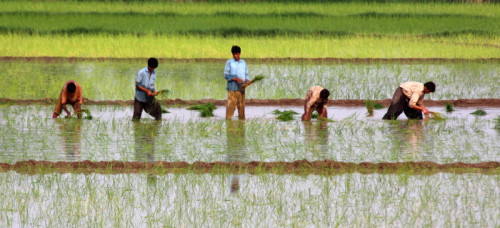LAHORE: As the second monsoon spell wears out and the third one enters the country next Monday; farmers and water planners have reason to rejoice; showers have eliminated water shortages; helped substantially fill both major dams and benefited the entire crop cycle (rice, sugarcane, and maize).
According to Met department officials, the country received 23 per cent more rain between July 1 and 23 than its historical average. During these three weeks, Punjab received 17pc more rain, Khyber Pakhtunkhwa 32pc, Gilgit-Baltistan 151pc, Azad Jammu and Kashmir 9pc, and Balochistan 49pc more rain. Sindh was the only unfortunate part that received 12pc less rain.
The two spells so far have ended water scarcity that had reached close to 30pc, but provinces are now getting 26pc more than their requirement. On Friday, Sindhh was getting 160,000 cusecs, Punjab 135,000 cusecs, Balochistan 14,000 cusecs and KP 3,100 cusecs. According to the Indus River System Authority (Irsa); the overall (April 1 to July 20) water shortage has come down to 12pc.
During these weeks, the Tarbela Lake rose by 57 feet; it stood at 1,431 feet on July 1 against 1,488 feet on Friday. Even more significantly, Mangla Lake jumped by 23 feet during the same period: from 1,153 feet to 1,176 feet. Both lakes, however, are still far behind their planned levels: Tarbela’s 35 feet and Mangla’s 60 feet. But Irsa considers this a much better position than what it was facing three weeks ago, and pins hopes on the next spell from Monday.
Farmers are happy
With no signs of shortage and instead water available in surplus, farmers, especially in the upper parts of Punjab, are happy. All three major crops under various stages of their life cycle are expected to benefit from the rains.
“Those who have sown maize early (to be followed by wheat or potatoes) would certainly see their crop turning healthy with soil cooling down and showers supplementing water requirements;” says Raja Lutfullah, a grower in the suburbs of Gujranwala.








